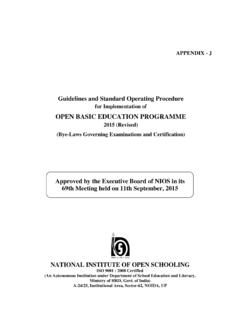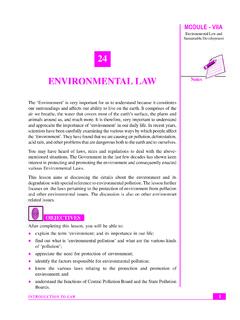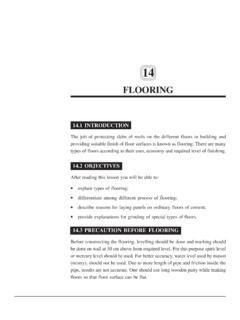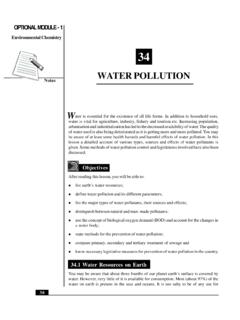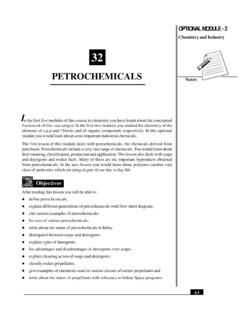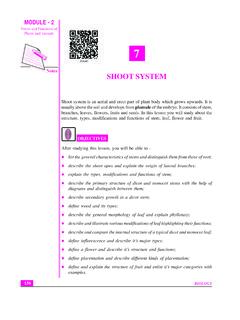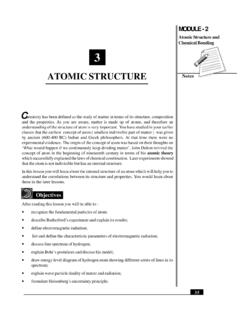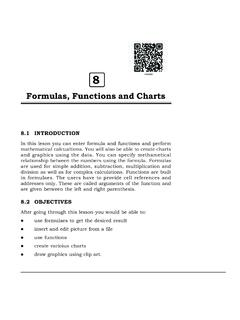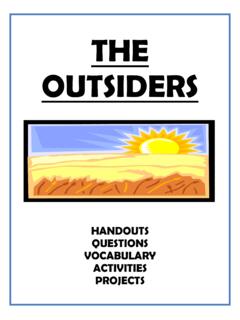Transcription of 29 HUMAN SETTLEMENT
1 MODULE - 9 HUMAN resourcedevelopment in India 301 HUMAN SettlementGEOGRAPHYN otesIn the previous lesson, we have discussed about population composition; totalpopulation; rural-urban population; population growth, etc. In this lesson, our focuswill be on HUMAN settlements. Therefore, discussion will revolve around the conceptof settlements meaning and nature, evolution and classification of rural and urbansettlements in reading this lesson, you will be able to: describe the meaning of SETTLEMENT ; identify various types of rural settlements; describe various house types in India; establish the relationship between house types with relief, climate and buildingmaterials; define an urban areas as given by census of India; analyse the distributional patterns of rural and urban settlements.
2 And explain functional classification of urban settlements as given by census WHAT IS A SETTLEMENTT hough we use this term very frequently, but when it comes for defining, it is verydifficult to give a clear cut definition. In simpler term we can define SETTLEMENT asany form of HUMAN habitation which ranges from a single dowelling to large word SETTLEMENT has another connotation as well as this is a process of openingup and settling of a previously uninhabited area by the people. In geography thisprocess is also known as occupancy. Therefore, we can say SETTLEMENT is a process29 HUMAN SETTLEMENTMODULE - 9 HUMAN SettlementHuman resourcedevelopment in India 302 GEOGRAPHYN otesof grouping of people and acquiring of some territory to build houses as well as fortheir economic can broadly be divided into two types rural and urban.
3 Beforediscussing about meaning and types of rural and urban SETTLEMENT in India, weshould know some basic differences between rural and urban areas in general.(i)The major difference between rural and urban areas is the function. Ruralareas have predominantly primary activities, whereas urban areas havedomination of secondary and tertiary activities.(ii)Generally the rural areas have low density of population than TYPES AND PATTERNS OF RURAL SETTLEMENTSB efore discussing types and patterns of rural settlements in India, let us have someidea about the words: type and pattern. Type refers to a category of thingshaving some common features whereas pattern refers to a regular form or order inwhich a series of things occur.
4 When we say SETTLEMENT pattern, the term is strictlyapplied to the spatial arrangement or distribution of settlements within a givenarea. It differs from SETTLEMENT form. SETTLEMENT form relates more to the spatialcharacteristics of individual SETTLEMENT . However, sometimes forms and patternsare used interchangeably. But here we will discuss about the patterns only. As faras type of rural settlements is concerned, it implies the degree of dispersion of of Rural SettlementsGeographers have suggested various schemes of classification. If we groupsettlements found all over the country, these can broadly be grouped under us discuss these types one by one along with some of the major patternsassociated with each Settlements: As the name suggests, these settlements have closelybuilt up area.
5 Therefore in such settlements all the dwellings are concentratedin one central sites and these inhabited area is distinct and separated fromthe farms and pastures. Maximum settlements of our country comes underthis category. They are spread over almost every part of the country. Thesesettlements are distributed over the entire northern Indo-Ganga plain (fromPunjab in the north-west to West Bengal in the east), Orissa coast, basins ofMODULE - 9 HUMAN resourcedevelopment in India 303 HUMAN SettlementGEOGRAPHYN otesMahanadi in Chhattisgarh, coastal areas of Andhra Pradesh, cauvery deltaof Tamil Nadu, Maidaus of Karnataka, lower Assam and Tripura, in thevalleys of Siwaliks etc. Sometimes people live in compact SETTLEMENT forsecurity or defence purpose.
6 The greatest example of this type is inBundelkhand region of Madhya Pradesh and Uttar Pradesh. In Rajasthanalso people live in compact SETTLEMENT because of the scarce availability ofcultivable land and water body. Therefore, they want to make maximum useof available natural settlements generally range from a cluster of about thirty to hundreds ofdwelling of different forms, size and functions. On an average their size variousfrom 500 to 2,500 persons in sparsely populated parts of Rajasthan to morethan 10,000 persons in Ganga plain. Very often these settlements have adefinite pattern due to closely built area and intervening street patterns. Asmany as 11 patterns are identified. We will discuss only Five major patterns are: (i) Linear pattern (ii) Rectangular pattern (iii) Circularpattern (iv) Square pattern (v) Radial pattern(i)Linear Pattern : It is commonly found along main roads, railways,streams, etc.
7 It may have a single row of houses arranged along themain artery. For example rural settlements found along the sea coast,river valley, mountain ranges etc.(ii)Rectangular Pattern : This is a very common type which developsaround the rectangular shape of agricultural fields as it is common tofind a system of land measurement based on square units. Village pathsand cart tracks also confirm to the rectangular field patterns and runthrough the village in north-south and east-west directions. Accessibilityto farms and fields and connectivity to other settlements lead torectangular shape of settlements. The settlements of coastalMaharashtra and Andhra Pradesh and either side of Aravali hills, be cited for examples.
8 (iii)Square Pattern: This is basically a varient of rectangular type. Such apattern is associated with villages lying at the crossing of cart tracks orroads and also related to features restricting the extension of the villageoutside a square space. These features may include an old boundarywall, thick orchards, a road or a pond.(iv)Circular Pattern : In the upper Doab and Trans Yamuna districts,Malwa region, Punjab and Gujarat, large villages are characterized bya very high degree of compactness. The outer walls of dwellings adjoineach other and present a continuous front so that when viewed fromoutside, the villages look like a walled and fortified enclosure piercedby a few openings. The round form was a natural outcome of maximumaggregation for the purpose of defence during the past.
9 (v)Radial Pattern : In this type, a number of streets converge on oneMODULE - 9 HUMAN SettlementHuman resourcedevelopment in India 304 GEOGRAPHYN otescentre which may be a source of water (pond, well), a temple ormosque, a centre of commercial activity or simply an open , the streets seem to be radiating from a common centre. Examplesare settlements near Gurushikar, Mount Abu in Rajasthan, Vindhyachalin Uttar Pradesh, Compact SETTLEMENT : As the name suggests, the dwellings or housesare not well-knitted. Such settlements are characterized by a small butcompact nuclears around which hamlets are dispersed. It covers more areathan the compact settlements. These settlements are found both in plains andplateaus depending upon the environmental conditions prevailing in that settlements are situated along streams in Manipur Mandla and Balaghatdistricts of Madhya Pradesh, and Rajgarh district of Chhattisgarh.
10 Differenttribal groups inhabit such settlements in the Chhota Nagpur region. InNagaland, such settlements may be in the form of blushing villages. Like,compact settlements, semi-compact settlements may also have differentpatterns. Some of the patterns are (i) checker board pattern (ii) Elongatedpattern (iii) Fan shaped pattern.(i)Checker Board Pattern: This is a type of SETTLEMENT found generallyat the junction of two roads. The village streets meet each other at anangle or are parllel to each other. This is because of the tendency toalign the dwellings along cardinal axes. This pattern is common in thenorthern plains.(ii)Elongated Pattern: Such SETTLEMENT occurs as a result of elongationof the rectangular pattern due to influence of site features.
